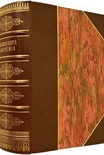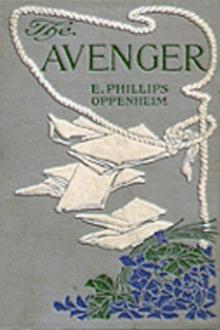Hitler's Terror Weapons, Brooks, Geoffrey [cat reading book .txt] 📗

Book online «Hitler's Terror Weapons, Brooks, Geoffrey [cat reading book .txt] 📗». Author Brooks, Geoffrey
Only one man who sailed on the first and last voyage of U234 failed to make it home. Fregattenkapitän Gerhard Falck knew everything about the uranium consignment and probably he knew too much for his own good. 127 The German justice authorities dealing with the repatriation of Wehrmacht prisoners has no record of his return128 and the US Government has so far been unable to account for his whereabouts in their custody after May 1945. He was a legitimate prisoner of war, having been captured while travelling as a passenger on an enemy warship at the time of it surrender. From there he was taken to Fort Hunt outside Washington DC and the declassified portion of his interrogation report indicates that he was cooperative.
In international law the Unites States as captor has a duty to account for all prisoners taken under Article 118 of the Geneva Convention Relative to the Treatment of Prisoners of War of 27 July 1929, to which the Unites States is a signatory, and to date in this case they have declined to do so. If the suspicion exists that Falck met his death unlawfully in their hands, it is not unjustified in the circumstances. The mysterious disappearance of Gerhard Falck is the first of the many secrets pertaining to the cargo aboard the German submarine U-234.
CHAPTER 12
“In the Interests of National Defense or Foreign Policy …”
IT IS CURIOUS that, after more than fifty-five years, despite the rules respecting automatic declassification of documents, much of the archive material relating to the cargo of the German submarine U-234 still has not been made public. In 1985 American journalist Robert K. Wilcox wrote: “Inquiries to government agencies have produced nothing. It is as if the incident never occurred, as if U-234, its important passengers and cargo, never arrived”.129 British rocket engineer Philip Henshall wrote in 1995: “Despite requests made to the US naval authorities, the reply has always been that matters relating to nuclear affairs are still subject to official secrecy”.130
Anybody who thinks this is legal should examine American law itself.131 In the United States, a request to a Government agency must be answered within ten days, and if denied a reason given. The courts have ruled that the Freedom of Information Act is to be broadly construed in favour of disclosure, and its exemptions are to be “narrowly construed”.
Where a matter is to be “kept secret in the interests of national defense or foreign policy” pursuant to an Executive Order, then the section relating to disclosure does not apply. If this exemption is being used secretly after 55 years, there must have been something extraordinary indeed about the heavy little cases of uranium on board the German submarine U-234. There is no blanket exemption by which nuclear matters generally are still subject to secrecy, and many formerly Top Secret documents in the matter have been declassified.
The Japanese Interest in Nuclear Materials
The interest of the Japanese Government in an atom bomb had waned in 1942 once it was realized that the separation of the U235 isotope for the purpose of making the bomb would require an enormous labour force, stupendous investment, one-tenth of Japan’s annual electricity requirement and half the nation’s copper output for a year. Professor Yoshio Nishina was the senior atomic scientist and headed the Army project. In 1943, when a link was established with Germany, Nishina asked for a cover story so that the Germans would not be suspicious of a request for uranium. The need for uranium as a catalyst was the excuse apparently adopted.132 It is firmly established that Japan did subsequently request uranium from Germany for experimental purposes in 1943133, and probably received a few tons. Japan had several hundred tons of uranium ore and had been prospecting successfully in Korea and Burma for more. Unless all this has a double meaning, one infers that Japanese physicists had worked unsuccessfully on an atom bomb project since 1941 and had not progressed beyond the early laboratory stage. The German naval historian Professor Jürgen Rohwer has confirmed from the first Magic decrypts for 1943 and 1944/45 that Japan requested from Germany a “quantity of uranium oxide” in connection with their atomic research into the fissile isotopes including plutonium.134
Accounting for the U-234 Cargo: the Primary Documents
The initial US Navy Unloading Manifest of U-234 was a translation carried out by the Office of Naval Intelligence and issued on 23 May 1945. The only item of uranium mentioned was ten cases of uranium oxide. Revised manifests, such as that of 16 June 1945, omit the uranium oxide. No mention was made of any uranium material in the long memorandum to C-in-C Atlantic Fleet of 6 June 1945 describing the U-234 voyage and cargo arrangements in close detail.
The first manifest showed “10 cases Uranium Oxide, 560 kilos” consigned to the Japanese Army. As the item is part of the overall weight of the cargo, 560 kilos means the combined weight of containers and contents.
The next primary document is the copy of a secret cable #262151 dated 27 May 1945 from Commander Naval Operations to Portsmouth Navy Yard on the subject of “Mine Tubes, Unloading Of”. Distribution of the memorandum was to the commandant and various duty and orderly officers. It reads:
“Interrogation Lt Pfaff second watch officer U-234 discloses he was in charge of cargo and personally supervised loading all mine tubes. Pfaff prepared manifest list and knows kind-documents and cargo in each tube. Pfaff stated long containers should be unpacked in horizontal position and short containers in vertical position. Uranium oxide loaded in gold lined cylinders and as long as cylinders





Comments (0)